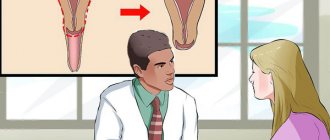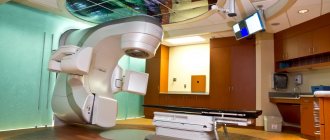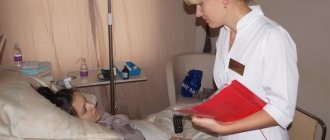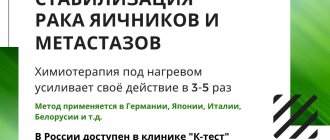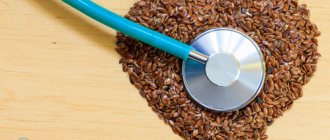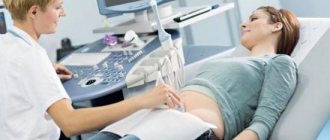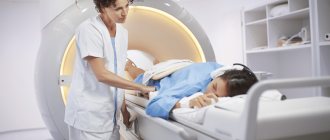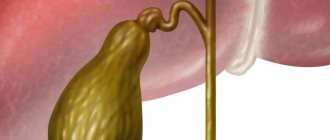Uterine fibroids are a disease that occurs in women of reproductive age. Among the complex of reasons influencing its occurrence, special attention is paid to hormonal levels. Due to hormonal imbalance or under the influence of genetic predisposition, even a healthy woman can develop a benign neoplasm.
The question: how active a lifestyle can you lead after its removal, is it possible to pump up your abs with uterine fibroids or spin a hoop, many representatives of the fairer sex ask.
Allowed physical activity for uterine fibroids
Ten years ago, gynecologists forbade their patients to play sports, and they had to forget about the usual workouts for the body for an indefinite period of time. Doctors motivated this by the fact that any physical activity leads to increased blood flow in the muscles and internal organs, and the uterus is no exception. The flow of blood to the reproductive organ creates favorable conditions for the growth of fibroids and provokes the development of dangerous complications. For this reason, it was recommended to forget the trip to the gym until the tumor was completely eliminated - surgically or naturally (during menopause).
Today, medical tactics have changed, and gynecologists are no longer so actively dissuading their patients from playing sports and fitness. On the contrary, it has become obvious: a sedentary lifestyle with fibroids is as dangerous as excessive caution. Refusal of physical activity leads to weight gain and accumulation of adipose tissue. Fat is a “depot” of estrogen, and an increase in the level of this hormone is considered the leading cause of the growth of fibroids. In this regard, gynecologists support women's desire to be in shape, but warn: not all exercise is good for health.
Playing sports with fibroids does not have to be completely excluded, but it is worth remembering that not all physical activities are allowed for this pathology.
On a note
With uterine fibroids, breathing exercises, cardio exercises, swimming, and walking will not cause harm. You should practice yoga and Pilates with caution - some positions involve working the abdominal muscles. It is recommended to avoid any workout that puts stress on the abs and buttocks.
In pursuit of a beautiful figure, or the dangerous consequences of fitness
Traditionally, with uterine fibroids, all exercises related to stress on the abdominal and buttock muscles are prohibited. If a tumor is diagnosed, it is not recommended to pump the press, spin a hoop, or perform any actions that lead to increased blood flow in the pelvic area. It is believed that such training improves the nutrition of fibroids and thereby leads to its rapid growth. Active tumor proliferation threatens the development of complications:
- The appearance of uterine bleeding or an increase in its intensity;
- Compression of the bladder, intestines, blood vessels and nerve plexuses and other organs with disruption of their function;
- Increased risk of complications (tumor pedicle torsion);
- The appearance of constant pain in the lower abdomen.
Increased blood flow in the pelvis can cause intensive growth of fibroids, which in turn is fraught with the development of a number of complications.
Physical activity cannot lead to malignancy of the tumor, but the list of complications is impressive even without it. Before starting any training, you should definitely visit a doctor and clarify possible contraindications. In certain situations, sports, including abdominal exercises, should be avoided.
It is also useful to read: Physical exercises allowed for uterine fibroids
Contraindications for abdominal training with uterine fibroids:
- Myoma on a thin stalk. Such nodes are located under the peritoneum and can become twisted during active training. Torsion of the tumor is accompanied by the appearance of sharp pain in the lower abdomen and requires emergency surgical intervention;
- Submucosal fibroid. A tumor located in the uterine cavity makes itself felt by heavy menstruation and uterine bleeding. The load on the press provokes increased blood flow and leads to an increase in the volume of discharge;
Abdominal exercises are not recommended if you have submucosal fibroids or a pedunculated node.
- Uterine bleeding of any frequency and intensity. Intense physical activity on the abdominal muscles will lead to increased bleeding and the development of anemia;
- Signs of compression of the pelvic organs. Additional stress on the muscles can increase the displacement of organs and lead to disruption of their functioning;
- Pregnancy due to fibroids. While expecting a baby, any stress on the abs is contraindicated, and if there is a tumor, it is especially not worth the risk.
It is not recommended to exercise during menstruation. Menstruation with fibroids is heavy and prolonged, and during this period you should refrain from any physical activity. Exercising during menstruation increases bleeding and provokes the development of anemia.
Strength exercises and contraindications
It is widely believed that uterine fibroids completely exclude a woman from any type of training and strength training.
For the treatment of UTERINE FIBROID, Natalya Shukshina recommends a new method based on NATURAL components - the Monastic Collection of Father George. It contains 8 useful medicinal plants that are extremely effective in the treatment of UTERINE FIBROID. Only natural ingredients are used, no chemicals or hormones!
Today, doctors refute the fact that exercises for uterine fibroids are contraindicated, speaking only about the correct choice of their type, when physical stress on the body will be carried out in doses and correspond to the woman’s current condition.
Excess weight and fat mass only complicate the course of the disease, significantly affecting the well-being of patients.
Training may become incompatible with fibroids when the patient complains of severe pain, regular bleeding, and painful menstrual periods. The permission of the attending physician to prescribe a special strength training program is required.
It has been proven that a healthy and fit body helps a woman quickly cope with any illness, and elastic abdominal muscles allow her to keep her internal organs in their places, i.e. do not allow them to drop or shift.
Sport is an excellent preventative measure against diseases of the female reproductive organs and can keep the entire body in healthy tone. If the doctor has diagnosed a pedunculated fibroid in the patient, then exercises with excessive rotational movements of the lower body are considered an absolute contraindication.
This is due to the risk of torsion of the myomatous leg. With uterine fibroids, lifting weights and strength training, in which the main emphasis is on the abdominal muscles, are impossible. Such exercises can cause bleeding and displacement of the uterine cavity, up to its prolapse.
Read more Rubella vaccination for adults up to what age
You can play sports with various diseases, but you need to approach the choice of the same gymnastics carefully. It is necessary to avoid strong jumps and shaking of internal organs; sports should be moderate.
Safety precautions for uterine tumors
There is no categorical ban on training with fibroids. European gynecologists believe that such restrictions are not justified. According to Western doctors, a woman with fibroids can work out her abs and buttocks, do hula hoops, do yoga or Pilates, ride a bike, run in the morning - whatever she wants. Russian colleagues do not agree with this statement and say that if you have fibroids, you cannot play sports with a load on the abdominal muscles. The truth lies somewhere in the middle, and the final decision rests with the woman.
If you have fibroids, you should consult your doctor about playing sports.
Important aspects:
- Before starting training, you should consult your doctor. An ultrasound of the pelvic organs is required and the size of the fibroids is assessed. Subsequently, the growth of the node is monitored every 6 months;
- The intensity of the load increases gradually and only when the tumor is stable. If the node grows, the amount of training decreases until a complete refusal to play sports;
- For large nodes (from 5-6 cm), training is not recommended. You must first get rid of the tumor, and only then exercise the abdominal muscles;
- After removing the fibroids, you should wait until the sutures are completely restored and healed. If a woman hoops or does abdominal exercises soon after surgery, the stitches may come apart and cause bleeding;
- After embolization of the uterine arteries, it is not recommended to load the abdominal muscles for 1.5-2 months;
- Taking hormonal medications and playing sports with fibroids are not always compatible. Some medications have side effects such as weakness, dizziness, and decreased concentration. In such conditions, training can be dangerous.
Each case of fibroids requires an individual approach to treatment and setting restrictions.
You can play sports with fibroids only if you feel well. You should stop training if the following symptoms appear:
- Pain in the lower abdomen of any intensity;
- The appearance of bloody discharge from the genital tract;
- Severe weakness, dizziness;
- Increased heart rate by more than 30% of the original;
- A sharp increase in blood pressure.
It is also useful to read: Is it dangerous to sunbathe if you have uterine fibroids?
All these symptoms may indicate the development of complications and require medical supervision. It is necessary to contact a gynecologist; if the condition worsens significantly, call an ambulance.
Sharp pain in the lower abdomen may be a symptom of necrosis or torsion of the fibroid stalk.
Abs workouts
Since it is prohibited to pump the abs with fibroids, no special techniques for working the abdominal muscles have been developed for this pathology. Most fitness trainers refuse to include women with uterine tumors in their group, and then training videos on the Internet come to the rescue. Such self-training threatens the development of serious complications, so you should not get carried away with home training. If a woman is focused on playing sports, she should find an experienced instructor and strictly follow all his recommendations.
There is an opinion that with small fibroids (up to 2.5 cm), located subserosally (on a wide base, and not on a thin stalk), it is possible to pump up the press, but gynecologists do not give any guarantees. With increased blood flow to the pelvic organs, it does not matter what size the original tumor was if it begins to grow and spread into surrounding tissues.
It is important to know
There are no clear recommendations on how to properly pump up abs with fibroids. Any impact on the abdominal muscles threatens to increase blood flow and worsen the woman’s condition. The best option would be to abandon such training and pay attention to other useful exercises.
Exercising your abs with fibroids is contraindicated and risks developing serious complications.
Hoop
An ordinary plastic hoop does not pose a significant threat to uterine tumors, since its effect on blood flow in the pelvic organs is minimal. If you have fibroids, it is not recommended to use hoops with weights and a ribbed surface. Such models intensely affect the abdominal muscles and can potentially lead to tumor growth.
It is important to know
The ban on training that involves impacting the abdominal muscles applies not only to fibroids, but also to other gynecological diseases. You should be careful with concomitant endometriosis, cysts and ovarian tumors.
Playing sports with a hoop is possible, but without putting excessive strain on the abdominal muscles.
Certain types of exercises
Kegel workouts.
Specialists have developed a special program that allows you to achieve a complete cure, provide the necessary preventive measures, and achieve restoration of the body after surgery.
Kegel exercises are also recommended for absolutely healthy women, despite the fact that many of them treat such exercises with irony. The essence of the technique is to strengthen the intimate muscles of the genital organs.
I recently read an article that talks about Father George’s Monastic Collection for the treatment and prevention of fibroids. With the help of this collection you can FOREVER get rid of fibroids and problems like women at home.
I’m not used to trusting any information, but I decided to check and ordered a bag. I noticed changes literally within a week: the constant pain in the lower abdomen that had tormented me before receded, and after 3 weeks disappeared completely. Uterine bleeding has stopped. Try it too, and if anyone is interested, below is the link to the article.
You can improve the functioning of the female body, in general, increase blood flow to the genitals. It is known that the formation of fibroids is associated with poor blood circulation through the vessels, so Kegel exercises are very important.
Training significantly strengthens the muscles of the pelvic organs, prevents the occurrence of gynecological diseases (night and daytime enuresis, cystocele, etc.), and delays the onset of menopause.
As a preventative measure to prevent the appearance of fibroids, Kegel exercises should be started in advance. Before starting classes, you must obtain a doctor’s permission and obtain the necessary recommendations on strength training.
Twisting a hoop (hula hoop).
It is better to do such gymnastics for those who want to give their waist and hips a perfect look and get rid of excess weight, but for patients who have uterine fibroids, spinning a hula hoop is absolutely contraindicated. Doctors urge women not to hoop at all if they have various gynecological diseases.
Using a hoop creates a high risk of uterine prolapse along with fibroids and creates complications in other diseases. It is not recommended to spin a hoop if you have uterine fibroids of varying degrees of severity.
This promotes a rush of blood to the abdomen, thereby causing bleeding and pain in the pelvic area, especially in the presence of a tumor. It is necessary to take care of your health and be guided by the testimony of doctors when choosing exercises to create a beautiful figure.
Women who are predisposed to the formation of fibroids and those who have already recovered from the disease should not do exercises with a hoop. Hoop can provoke a relapse of the disease, like other sports without proper medical examination.
Specialists, fitness instructors for the treatment of physical education, recognized swimming as the best way of physical activity for uterine fibroids. Swimming allows you to restore the internal muscles of the intestines, without the normal functioning of which treatment will be difficult.
Swimming perfectly strengthens the muscles of the whole body, especially the muscles of the chest, neck, and hips, if you do all the exercises as required by the trainer. Properly distributed load during exercise will significantly increase a woman’s overall tone, create a good mood, and impart a state of purification and lightness.
It is recommended to combine swimming and fitness, so according to your doctor’s indications, you can safely sign up for water aerobics.
Abdominal exercises for uterine fibroids.
Anatomically, the press is located close to the woman’s genital organs, including the uterus area. With fibroids of the uterine cavity, this type of exercise should be used extremely carefully, adequately dosing the load on the muscles.
It is better to pump up the abs for preventative purposes, to give the muscles elasticity and the body general tone. If the myomatous node is quite pronounced, the patient has undergone surgery, and suffers from poor health, then the press should not be pumped under any circumstances.
Blood flow to the pelvic organs increases, the blood is more actively supplied with oxygen, which contributes to the appearance of fibroids or their growth.
In conclusion, we can say that sports for myomatous lesions of the uterine cavity are appropriate and acceptable, if you take into account all the recommendations of the attending physician. Only a doctor is able to correctly assess what kind of training is necessary for an individual patient.
Making your own appointments is not safe. It is necessary to measure a woman’s pulse before and after classes. If no negative dynamics are observed within a month, you can safely increase physical activity.
Correctly distributed and regular load on the body will not only not cause harm, but will also increase the chances of recovery and recovery after a long period of treatment.
Just ten to fifteen years ago it was believed that physical activity was unacceptable if you had uterine fibroids. Women were not allowed to engage in light sports, even twirling a hoop or doing gymnastics.
However, thanks to numerous studies, it has been proven that in most cases with uterine fibroids, you can lead a normal lifestyle, but with some restrictions. And playing sports, in particular, twirling a hoop and doing gymnastics is also possible. Physical activity is not only allowed, but also encouraged, as a prevention and method of treating the disease.
Uterine fibroids in modern gynecology are considered one of the most common gynecological diseases. According to various sources, this pathology affects up to 85% of women of different age groups. This is largely due to the introduction of diagnostic methods such as ultrasound or hysteroscopy, which make it possible to most accurately identify and classify uterine fibroids.
Read more Where does thrush come from in women?
Uterine fibroids are a gynecological disease that involves the formation and development of a hormone-dependent benign tumor in the myometrial tissue. It is noteworthy that the tumor in fibroids is not true, which allowed specialists to consider it as a form of hyperplasia of smooth muscle elements.
The disease goes through several stages before uterine fibroids can be diagnosed. Initially, an active growth zone is formed, penetrated by small vessels. After some time, a small nodule forms, which progresses to a medium to large size.
Uterine fibroid nodes can be concentrated in the uterine body or in the cervical part. Sometimes a tumor is found between the layers of the broad ligament of the uterus.
Uterine nodes are:
- interstitial or intramural;
- subserous;
- submucosal or submucosal.
Often, uterine fibroids have an interstitial localization, which is considered the best option. These nodes grow slowly and rarely cause symptoms.
Submucosal nodes, as well as large tumors, have several characteristic features.
- Pain. Typically, pain is localized in the pelvic area, radiating to the lower back, sacrum and leg. The pain is aching in nature. They can intensify during menstruation, intimacy, and also if you play sports, for example, twirling a hoop or doing gymnastics.
- Changes in the nature of menstruation. As a rule, uterine fibroids are accompanied by an increase in the amount of bleeding during menstruation, as well as a general prolongation of the number of days of menstruation.
- Bleeding. Uterine bleeding with fibroids is not associated with the cycle and can lead to the development of anemia.
- Compression of internal organs located in the pelvis. Symptoms of compression include frequent urination or persistent constipation.
- Increase in abdominal volume. This manifestation is typical for large uterine fibroids.
In some cases, large nodes or fibroids with an unfortunate location cause infertility, which results in the inability to conceive. Quite often, the disease provokes spontaneous termination of pregnancy at any stage.
In modern gynecology, uterine fibroids are classified as a hormone-dependent disease. Proof that the pathology appears in response to changes in hormonal status is the development of the tumor exclusively after the first menstruation and its regression after menopause.
Uterine fibroids are susceptible to external influences. Women with a history of this diagnosis should pay attention to factors that can cause the progression of the disease:
- obesity;
- diabetes;
- stress;
- hypothyroidism;
- surgical and medical terminations of pregnancy;
- hypertension;
- long-term insolation;
- uncontrolled use of hormonal medications;
- childlessness.
Thanks to sports, the amount of adipose tissue, the cells of which contain female sex hormones estrogens, is reduced. Estradiol is the main cause of tumor growth. Sport allows you to prevent many diseases of the reproductive system, and also has a supporting effect on your general condition.
Lymphatic drainage massage for uterine fibroids
Pressotherapy is another popular method of working with the abdominal muscles. During the procedure, there is an intensive effect on the lymphatic system and the removal of excess fluid is ensured. The technique allows not only to remove swelling, but also to reduce weight, cope with cellulite, and improve skin condition. It is believed that pressotherapy restores water balance in the body, normalizes metabolism and activates blood circulation in tissues.
Lymphatic drainage massage for uterine fibroids is not recommended for the same reason as all other similar procedures. Activation of blood flow in the muscles of the lower abdomen and pelvic organs is undesirable with this disease. Pressotherapy can be carried out only after getting rid of the tumor.

